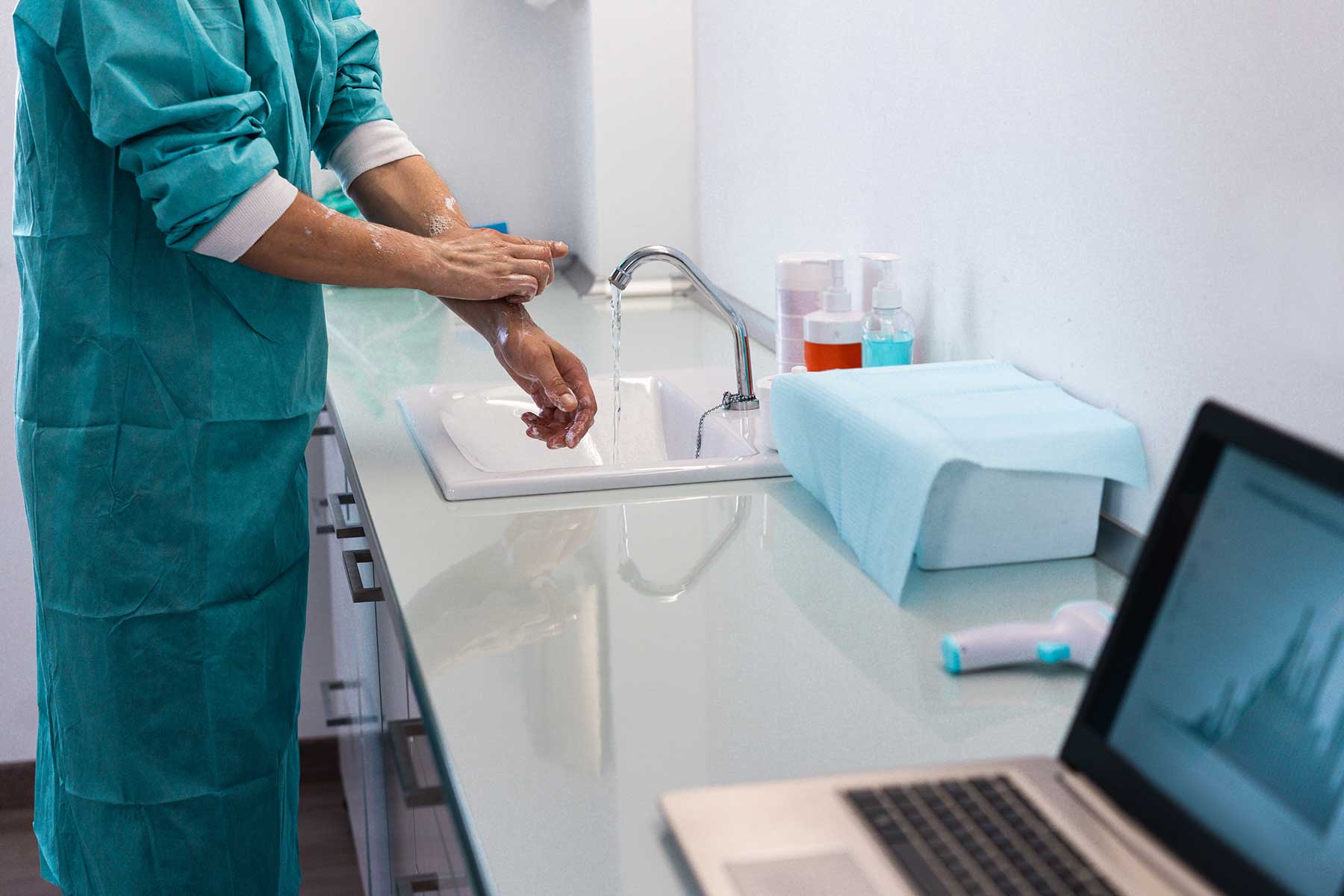Featured Image: DisobeyArt on Shutterstock
The operating theatre department requires quick feet and a quick mind to ensure that patients are getting the best care they need under exceptionally vulnerable circumstances. When a patient in our health system goes into the operating theatre, they are putting their trust in us, their health workers.
Theatre is a valuable and necessary section of the health system, and scrub/scout nurses are one of the fundamental pieces keeping the operating theatre running smoothly.
What is a scrub/scout registered nurse?
Otherwise known as instrument/circulation nurses, a scrub/scout nurse is a registered nurse working directly in the operating theatre. These two roles are interchangeable, and one cannot be done without the other. Most scrub/scout nurses will work both alternate roles throughout a shift.
The scrub/scout role is to assist the team in setting up the theatre, positioning the patient for surgery, setting up and maintaining the sterile field, advocating for the patient during surgery, assisting the surgical team and conducting the documentation process.
An average day as a scrub/scout nurse
The theatres where I work operate 24/7 so there are always different shift times. However, the bulk of our operating lists for both elective and emergency surgery take place between 8am and 4:30pm.
My shift starts at 7:30am, when I arrive at the hospital. The first thing I do is get changed into my theatre scrubs, shoes, and scrub hat. This specific theatre attire ensures that our own clothes do not get dirty, prevent outside dirt from entering the theatre department, and contain our hair, so it does not contaminate the surgical field.
Then we have a huddle, where we discuss the planned operating list for the day, highlighting any areas of concern. Areas to be addressed early include the need for special equipment, or patients with increased anaesthetic or surgical risk that may need to go to the Intensive Care Unit (ICU) post-operatively.
Once the huddle is complete, I start setting up the theatre for the day. Some perioperative scrub/scout nurses will specialise in one area – for example vascular or general surgery – and will often work only in these specialties. I am a bit of an all-rounder, so I do not have an assigned specialty. Scrub/scout nurses work together to set up each case. Before the first case we often discuss who will take the scrub and the scout role for each procedure.
Starting with the scrub role, I perform my first surgical hand scrub of the day, while the scout nurse opens the equipment and instruments we need for the case. The first hand wash of the day takes five minutes and involves using water and an iodine or chlorhexidine wash to ensure as much bacteria as possible is removed from my hands. This is where the term ‘scrub’ nurse comes from – as I am the one ‘scrubbing’ my hands.
Once I have ‘scrubbed’ in, I put on my sterile surgical gown and gloves with the help of my scout nurse, which is done in a specific way to ensure I stay ‘sterile’ for the surgery. I then start checking the instruments and equipment the scout nurse hands me to ensure they have been properly sterilised and are in good working order. I organise my trolley where all the instruments we need for the case are laid out. My scout nurse and I then perform a count of all the instruments and equipment I have on my trolley. This count is recorded.
Once I am set up and the patient is anaesthetised, we enter the theatre and perform ‘time out.’ This is a final check with all members of the theatre team present to ensure we have the correct patient, are doing the consented procedure and have the correct equipment. Once everyone is happy with the time out, we begin the procedure.
My role during the procedure is to ensure the sterility of the surgical field, hand up instruments to the surgeon and occasionally assist with suctioning and retracting. As the procedure comes to the end and the surgeon begins to close, the scout and scrub nurse work together to perform another count of the instruments and equipment. For every layer that is closed, we count to ensure all instruments and equipment are accounted for.
After all counts have been completed and are correct, I assist in cleaning the patient and applying the dressings, then transferring the patient off the operating table onto a bed, checking the documentation and cleaning up the theatre.
For the next case I work as the scout nurse, taking on the other side of our daily role. I begin by opening all the equipment and instruments in a sterile manner and counting in all the instruments and equipment with the scrub nurse. I also check with the other health professionals present in theatre, such as midwives and surgeons, to check if there are any extra equipment requirements or expected difficulties with the surgery so that I can prepare for them early. After everything has been confirmed, I ensure all my paperwork is correct, such as the patient’s consent and any allergies. I then record the important operating details such as the patient’s position, the use of positioning equipment, all persons present in the theatre etc.
After the patient is anaesthetised, I perform the ‘time out’ and then assist the scrub nurse throughout the surgery. The scout nurse also keeps the record of events of the surgery, such as time of birth (for caesarean sections), specimens taken, and amount of blood loss etc.
During the day there may be announcements of codes; hospital codes have different meanings, and all healthcare workers need to know what they mean and how to react to ensure that they are attended to in a timely manner. In the operating theatre at my hospital one of the most common codes we respond to day and night is a CODE PINK. This is an emergency case where a baby needs to be delivered via caesarean section immediately. Part of our response in theatre is to set up and perform this surgery very quickly.
Once the surgical list is complete, we clean and restock the theatre and set it up in case an emergency comes in overnight. We then change back into our normal clothing and head home. The great thing about perioperative nursing is that no two days are the same, there is always something new to learn and room to grow in your practice.
Are you ready to advance your career as a perioperative nurse? Designed for nurses, by nurses, the Australian College of Nursing’s (ACN) Graduate Certificate in Perioperative Nursing is specifically tailored to help you navigate the unique challenges of the diverse perioperative environment. You’ll complete specialty elective units that align closely with essential perioperative roles, including instrument/circulating, anaesthetic and post-anaesthetic care unit nursing. The course’s core curriculum dives deep into the intricacies of professional practice, legal and ethical elements of care, and the creation of a safe perioperative environment. Choose from a selection of elective units to explore in-depth topics such as pain management throughout the lifespan, infection prevention, and applied clinical physiology.
By Codie Reupert-Allen MACN
Codie Reupert-Allen MACN is a perioperative scrub/scout registered nurse in Melbourne and is currently completing her Masters in Perioperative Nursing. She has a passion for perioperative nursing and is an alumna of the ACN Emerging Nurse Leader Program. Her aspiration is to be a leader in perioperative nursing to ensure patients receive the best and safest care possible and to promote the profession for junior nurses and the general public.






